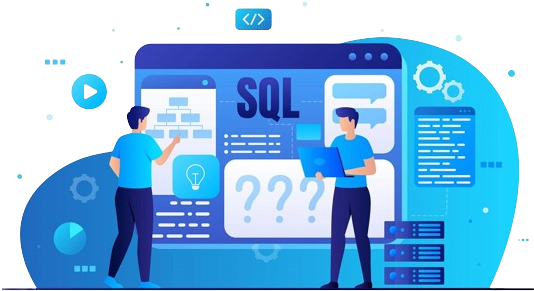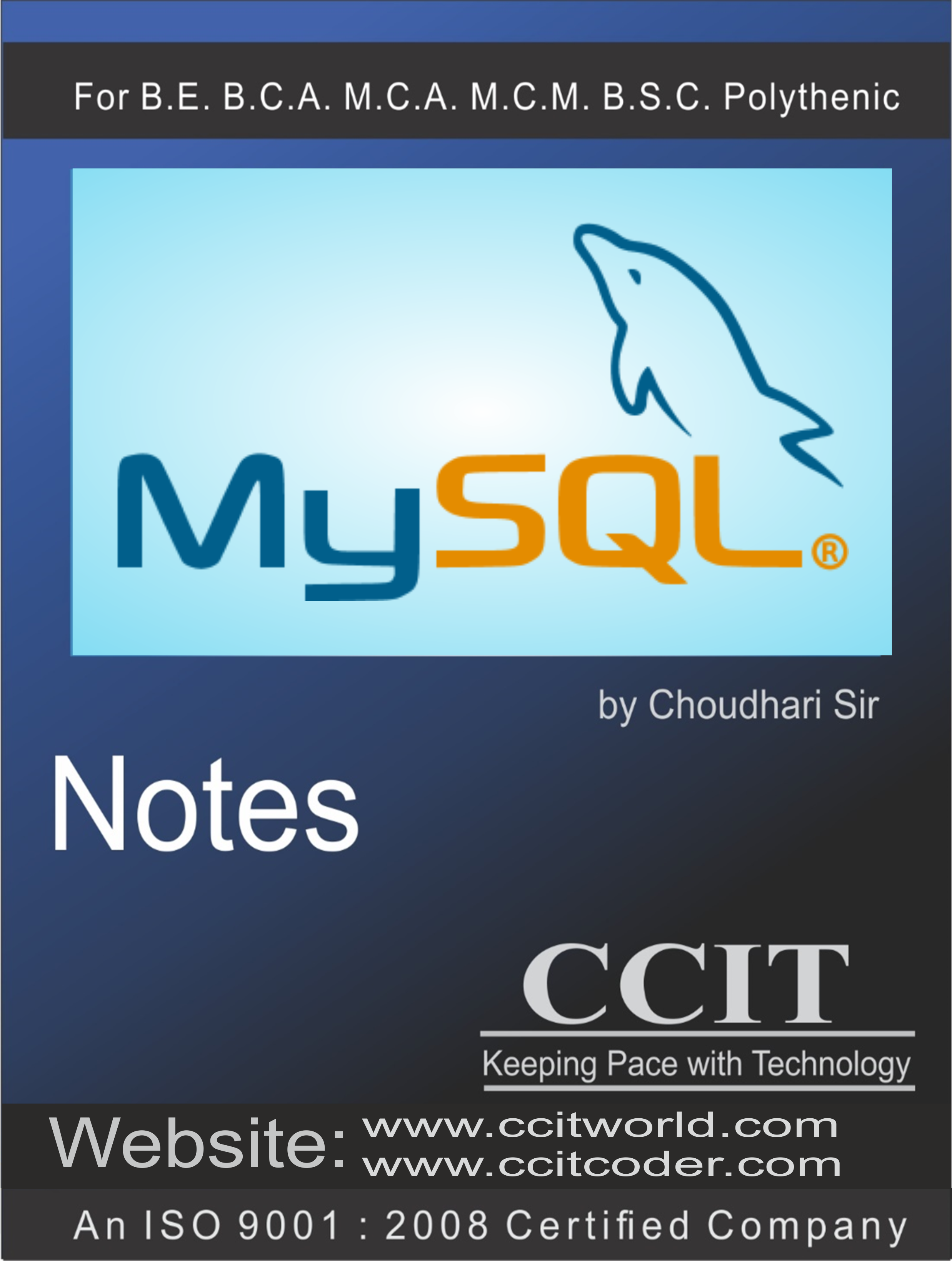MySQL
Learning MySQL is essential for effective database management. It empowers you to store, retrieve, and manage data efficiently, a fundamental skill for web development, data analysis, and various software applications.
Duration | 2 months

Course Objective
Master MySQL with a comprehensive course covering database design, SQL queries, optimization, and administration. Gain practical skills to create, manage, and optimize databases, essential for web development and data-driven applications.

Key Features
Duration : 2 months
Theory Lectures : 58
Practical Lectures : 64
Course validity : 4 Years
Theory Notes : 
Certificate : 
Thing You will Learn
1. Introduction
- What is Data
- What is Database
- Database Management System
- Database Server
- Why SQL
- SQL commands
2. MySQL Installation
- Download MySQL Installer
- Run the Installer
- Choosing Setup Type
- Select Products
- MySQL Server Configuration
- Verify Installation
3. Communication with MySQL-Server
- MySQL console
- MySQL Admin/Workbench tool
- Admin Control Panel
4. Data Types
- Numeric Types
- String Types
- Date and Time Types
- Binary Data
- Special Types
- JSON
5. Operators
- Arithmetic Operators
- Comparison Operators
- Logical Operators
- Bitwise Operators
- Assignment Operators
- IN Operator
- LIKE Operator
- IS NULL Operator
- BETWEEN Operator
6. Tables
- Create Table
- Table Name
- Columns Name
- Columns DataType
- Constraints
- All Tables in Database
- Describe table
- Drop table
7. Inserting record
- INSERT statement
- List the columns
- Insert values
- Inserting Single Row
- Inserting Multiple Rows
- Inserting with Subquery
- Handling NULL Values
8. Updating and Deleting record
- UPDATE statement
- Set column values
- WHERE Clause
- Updating rows
- Multi-Table Updates
- DELETE Statement
- Conditional Deletion
- Delete single record
- Delete multiple records
9. Select Command
- Select Statement
- Selecting All Columns
- Select single column
- Select Multiple column
- Column Aliases
- Select Filtering Rows
- Select Combining Conditions
- Limiting Rows
- Select records in Order
- Pattern Matching
- Filtering based on a set of values
- Combining data from multiple tables
- Grouping and Aggregation
- Subqueries
- Conditional Aggregation
- Aggregate Functions
10. Constraints
- Primary Key
- Foreign Key
- Unique Constraint
- Check Constraint
- Not Null Constraint
- Default Constraint
11. SET operations
- UNION
- UNION ALL
- INTERSECT
- EXCEPT (or MINUS)
12. Join Tables
- Define Table Join
- INNER JOIN
- LEFT (OUTER) JOIN
- RIGHT (OUTER) JOIN
- FULL (OUTER) JOIN
- Alias Usage
- Multiple Joins
- Self Join
- Join Conditions
13. Views
- Define Views
- Create Views
- Updateable Views
- Joins in Views
- Dropping Views
14. ALTER Table
- ALTER Command
- Add Column
- Drop Column
- Modify Column
- Rename Table
- Rename Column
- Change Column Position
- Add or Remove Constraints
- Multiple Alterations
- Default Values
- Auto-Incremen
- Data Type Conversion
15. Index
- Create Index
- Primary Index
- Unique Index
- Composite Index
- Full-Text Index
- DROP Index
16. User Management
- User Creation
- Grant Privileges
- Grant All Privileges
- Revoke Privileges
- Change Password
- Show Users
- Delete User
- Host Wildcards
- Authentication Methods
- Flush Privileges
17. Subquery
- Defining subquery
- Single-row Subquery
- Multiple-row Subquery
- Correlated Subquery
- Subquery in FROM Clause
- Subquery with EXISTS
- Subquery with ANY/ALL
- Subquery in INSERT
18. Library functions
- String Library Function
- Numeric Library Function
- Date and Time Library Function
- Misc Library Function
19. Stored Procedure
- Define Stored Procedure
- Creating a Stored Procedure
- Parameters
- OUT Parameters
- INOUT Parameters
- Execution
- Conditionals and Loops
- DECLARE
- Transactions
- Drop Procedure
20. Cursor
- Declare Cursors
- Opening Cursor
- Fetching Rows
- Looping Through Rows
- Closing Cursor
21. Stored Function
- Define Stored Function
- create Function
- Function Parameters
- Function Return Type
- Function Body
- Calling the Function
- Variables (DECLARE)
- Flow Control
- Drop Function
22. Trigger
- Define Trigger
- Creating Trigger
- Trigger Naming Conventions
- Accessing Old and New Values
- Conditionals in Triggers
- Rollback in Triggers
- Disabling and Dropping Triggers
23. Transaction
- Transaction Definition
- Transaction Properties (ACID)
- Transaction Control Commands
- Savepoints
- Auto-Commit Mode
- Transaction Locks
- Rollback and Commit Conditions
24. Normalization
- Normalization Definition
- First Normal Form (1NF)
- Second Normal Form (2NF)
- Third Normal Form (3NF)
- Boyce-Codd Normal Form (BCNF)
- Fourth Normal Form (4NF)
- Fifth Normal Form (5NF)
25. Import and Export
- Importing and Exporting Database
- Exporting Specific Tables
- Exporting for Specific Users
- Exporting with Date in Filename
- Exporting Stored Procedures and Triggers
- Exporting with Extended Insert Statements
CCIT Notes
CCIT MySQL Notebook offers a user-friendly interface for efficient MySQL database management. With features like query execution and result visualization, it simplifies data operations for developers and analysts.
- Theory Notes
- Course Book
- PPT Notes

Certificate
Elevate your career prospects with CCIT's MySQL Certificate, recognized by leading companies. As an ISO-certified institution, our certificate features QR code verification, ensuring authenticity and opening doors to top-tier opportunities in the industry.

